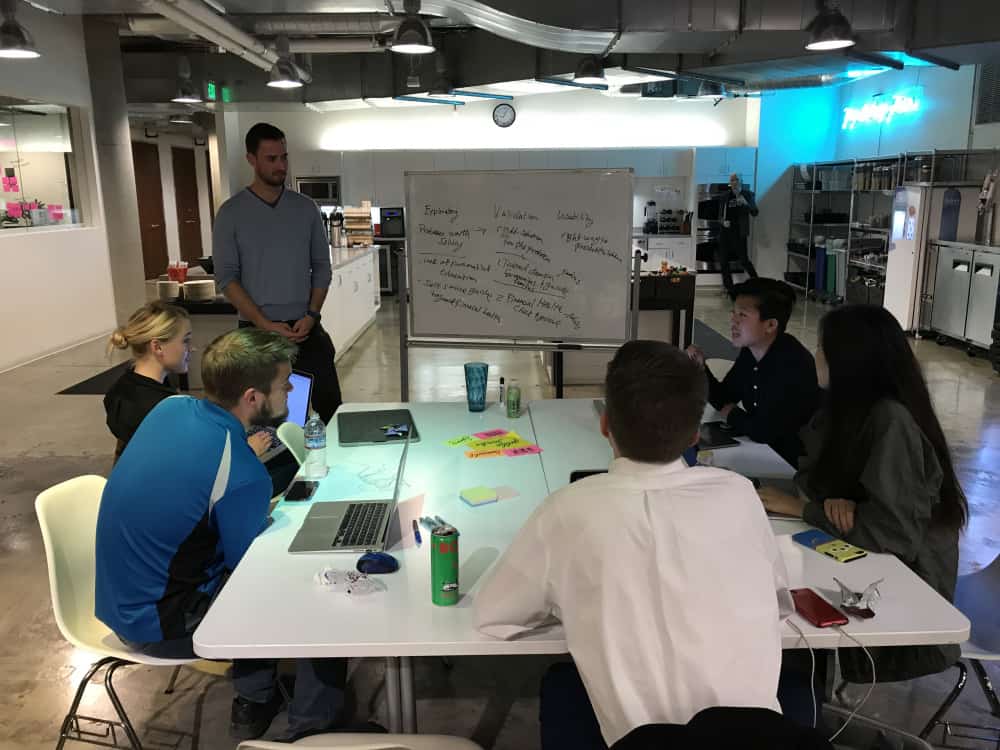Academy of Art’s web design school provides students real-world experience in creating UX solutions through Advanced User Experience (WNM 499). The new Special Topics class lets students work with local start-up companies as clients.
Pivotal Software product designer Aaron Lawrence is the instructor handling this School of Interaction & UI/UX Design program. According to him, the goal is to “give [students] a safe opportunity to come in and get a little bit of taste of what it looks like to work with a client before we send them out to the industry.”
UX design is not just about being able to develop a user-centered design. It must be based on a clear understanding of the user needs, and should provide practical solutions for user-experience problems. Beyond all of that, a good UX design practice must be able to tie these components back to the client’s business goals.
UX design, therefore, is strategic just as it is creative. In fact, this perfectly sums up the essence of UX design, according to Lawrence. “It takes a lot of not only craft development but also strategic thinking to balance out what is proper user experience design.”
Unfurling the UX Design Umbrella
UX Design is segmented into “three buckets of work under two umbrellas.” The first umbrella is Strategic. Underneath are the buckets: researching the targeted audience, understanding goals, and having problems to solve. The second umbrella holds the tangible or visual design. This is where styling the product comes in.
The course midterms requires students’ case studies to highlight learnings and themes that address concepts for problem validation and solution. This is to make sure that they get a holistic learning of the concepts.
Getting there entails students working in groups and brainstorming ideas for projects that do have real-world results. This alone already raises the stakes, but at the core of it all, it’s the teamwork they will build that ultimately matters.
After all, they will have to do the entire process together—from pitching to the client, executing their ideas, and finally, presenting the finished product to the client. This also lets them experience being critiqued for their work. Presenting themselves to the client, as well as learning how to communicate at a professional level, are also important takeaways.
Lessons on Client Collaboration
Students do have previous User Experience subjects (WNM 120 and WNM 290). However, as they quickly realized, WNM 499 gives them a real taste of just how complex it can get once they go out of the classroom setting. This experience is something truly valuable for anyone working to earn their web design degree.
Their clientele pool was put together from a list of early-stage fund venture 500 Startups—companies that are just building their branding, and so could definitely use some design help.
“I went into the initial meeting with an understanding of what targets to hit,” shared student Kathryn Davis. According to her, she “was very assertive about it and trying to direct where the problem was going to go.” But then she “realized that I couldn’t do that and I was being very off-putting.”
“There’s got to be an equal give-and-take between you and the client and how you go about solving a problem. You don’t even know the problem yet—how can you even know the trajectory?”
Meanwhile, Sara Lundberg learned the importance of a proper case study for UX design. Her project on stress alleviation in situations like waiting in airport security lines required extensive research.
“You and I can feel the same about a certain thing but be two totally different people,” Lundberg said. “You’re dealing with a broad spectrum of information, other people’s perception of the problem, solution, and product. You’re building solutions for real people to use, which is a much different experience than creating something only you understand.”
Core Learning
There is no guarantee that the client will actually use their projects. What’s most relevant, however, is that the students gained significant real-world industry experience from the class. Another major bonus is that they can include their completed work in their web design portfolio. They can even put it in their résumé, too, to improve their chances of being hired for internships or jobs.
The goal of this class is to let the students go through the motions of actual industry work. If they learn from this in the entire 15 weeks that the class run, then they can consider themselves better prepared for what’s waiting for them out there.
